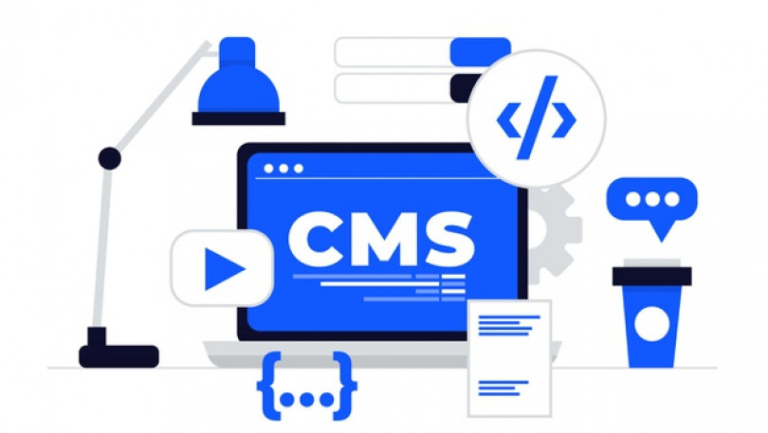What does the speed of the site and how to increase it?
No one likes looking at a blank screen. This is the picture visitors see if your site pages are loaded for a long time. Today’s users are used to fast surfing, so the loading speed of pages has long been an important factor for promotion. Search engines focus on user experience and take load time into account when ranking.
The loading speed of pages depends on many factors. To increase it, carry out comprehensive work with the site. Let’s look at the specific factors that affect this important indicator.
What is page load speed?
Page load speed is the time from the moment the link is clicked until the fully loaded page is displayed on the screen. It is measured in seconds. The optimum value should not exceed 2-3 seconds, but for high-loaded sites is allowed a little more than this time. They may need a dedicated server for speed.
There are many factors that affect speed:
- the user’s Internet connection;
- the characteristics and settings of the server;
- site settings;
- the number and size of images, animations and other multimedia content;
- the size of files with HTML, CSS, JavaScript code.
It is impossible to affect the speed of Internet visitors, but the rest of the indicators can be optimized.
What slows down the loading of pages?
Speed depends on many indicators that work together. Among them, a particularly important role is played:
- Large images. This refers to the size in pixels and megabytes. It takes more time to upload large pictures. Modern file formats will help maintain quality and reduce weight.
- A large number of scripts and plugins. They can significantly reduce the speed of page loading, so leave only the most necessary elements. For JS scripts you can set up asynchronous loading.
- Built-in video and animation. This beautiful solution can greatly increase the loading time of pages. Users probably won’t see the background video if it loads for more than 3-4 seconds.
- A large number of HTTP requests. Through them, the browser receives data from the server, but too many requests can slow down the site. This occurs when the page has a lot of tables, images, scripts and other data.
Low server response speed significantly reduces the total time of loading pages. On this point it is worth more detail.
Server response speed
Server response speed is the time between the moment when the request is received from the user and the beginning of the first page download byte. This time is measured in milliseconds.
What the server response speed depends on
The server response rate is affected by the physical location of the server. The further away it is from the user, the longer the response time will be. Users from Ukraine may notice this by going to foreign sites.
The speed is also affected by the technical characteristics of the server. Read our article on how to choose hosting so you don’t overpay for unused features.
How does caching help increase page load speeds?
Caching helps speed up loading, but only if you solve the other problems that are slowing down the site. There is no point in caching huge images, overloaded with spaces and comments HTML code.
Caching is the creation of copies of content for faster access when the user visits again. Caching includes different types:
- Browser cache. Browsers save copies of HTML, JavaScript, and image files to your computer’s hard drive. When you visit again, the browser uses a cached version of the content instead of downloading it from the server each time.
- DNS Cache. DNS servers cache records for faster retrieval on servers around the world. When someone visits your site, they are routed to the nearest DNS server.
- Static page cache. The HTML code of the page can be configured for subsequent caching. Static page caching is one of the most common tools used to increase site speed.
- Object cache. Like static pages, items from the cache load faster. By not performing the same repetitive operations, websites don’t use a lot of server resources.
Another caching option is CDN.
What is CDN?
CDN is a content delivery network. It is a global network of servers scattered around the world. They store cached copies of sites connected to the CDN. This improves safety and ensures high performance. Increasing the speed of page loading is the most important function of CDN, which is why most webmasters are connected to it.
It is easier to understand how this system works with a concrete example.
The online bike store sells its products all over Europe, and the server with the site is located in Paris. All information that users see is downloaded from a server in the French capital. When a visitor from Kiev goes to such a site, for each resource – text content, images, css and javascript files – the user’s browser sends a request to the server where this data is stored. Kiev and Paris are separated by more than 2,000 km.
This distance between the user and the server increases the response time by several hundred milliseconds. The browser sends many requests, and the server processes each one. The total download time may increase significantly. As a result, a visitor from Kiev will load the page slower than users from France.
CDN solves this problem. A cached copy of the data is created on the network servers. When a user from Kiev goes to a CDN-connected site, the system finds the nearest server and downloads content from it. This reduces the physical distance between the user and the server, which reduces the download time. If you want to host a server in Kiev, our company offers such a service.
How do I check the download speed?
Many tools allow you to check the loading speed of pages for free. Each of them may have slightly different results, so do not always use one service, discarding all the others. Testing the site in several services will help to get an overall picture.
Google Analytics
Having access to the analytics of your site, it is easy to know the loading speed of all pages. The advantage of this tool is that it measures the speed of the different intermediate steps. Go to the Site Load Rate reports to get detailed information on the different metrics:
- total download time, from clicking on the link to the full rendering of the web page;
- page load;
- redirection;
- server response;
- connection to the server;
- domain search.
The disadvantage of Google Analytics is that testing is based on actual visitor data. The result will be affected by their physical location, type of device, and internet speed.
PageSpeed Insights
Another tool from Google. It will be useful for those who promote the site in this search engine. The interface is quite simple: the site can get a maximum of 100 points for high speed. For clarity, grades are divided into 3 colored zones:
- 90-100 points – the highest scores indicate a high download speed, this is the green zone;
- 50-89 points – in the orange sector are sites with average download speed;
- 0-49 points – the slowest sites are in the red zone.
Although simple, PageSpeed Insights offers reports on a variety of metrics, including server response times, load times for interactions, and more. The program offers help: recommendations for optimization and approximate results after their implementation.
GTmetrix
Free and easy to use tool. Similar to PageSpeed Insights, the program gives an overall performance rating. The indicators are divided into 4 zones from green to red. GTmetrix also allows you to see different reports and makes optimization recommendations. The test server is located in Vancouver, Canada. To select a different location for the test equipment, you need to register. Note that the locations are dominated by cities in the U.S. and Europe.
The GTmetrix API allows you to integrate testing into a website or application.
WebPageTest
Another free and simple service to check the performance. It has the advantage of extensive customization. Here you can choose not only the location, but also the device, browser, type and speed of connection, and screen resolution. For example, you can test the speed of the site for iPhone 8 users with a 4G connection. Detailed results can be seen in the “Plot Full Results” report. WebPageTest offers an API with different pricing plans.
Among the disadvantages – no locations in Ukraine and neighboring countries. This is more of a help to those who are focused on foreign markets.
Netpeak Spider
It is enough to scan the site in the service to access the reports “Server Response Time” and “Content Download Time”. These reports are available for every page of your site.
Serpstat
The tool offers an in-depth site audit, including page load speed. To see the results, select “Site Audit” → “Upload Speed” from the left menu.
Summary
User behavior on the site depends on the speed of loading its pages. No one likes to see a white screen while the browser is retrieving data. If it happens for more than 4-5 seconds, the user is likely to leave. To prevent this, it is enough to reduce the loading time of pages. The main factors affecting speed:
- server response time;
- amount of multimedia content;
- the size of files with HTML, CSS, JavaScript code;
- The physical location and characteristics of the server.
Services such as Google Analytics and Google Page Speed Insights, as well as numerous third-party programs, can help you check the speed. Optimization recommendations include connecting fast hosting, setting up caching, connecting CDNs, cleaning up code, disabling unused scripts, and compressing images.
Page load speed is an important ranking factor. If you want to get to the top of Google, he should pay enough attention.








